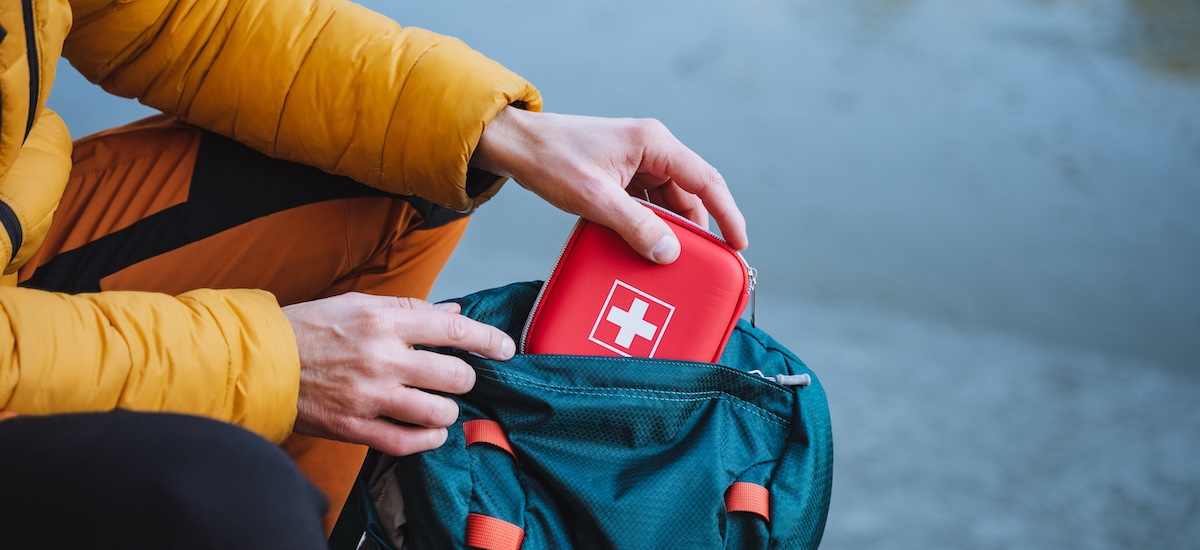When Life Happens: Building a Family Emergency Plan that Actually Works

Emergencies don’t wait for a convenient moment—and when they strike, the last thing you want is to feel unprepared.
Whether it's a hurricane, wildfire, winter storm, or unexpected power outage, having a solid family emergency plan in place can make all the difference between chaos and calm. Yet surprisingly, only 39% of Americans have developed an emergency plan for their household, according to a FEMA survey. That means millions of families are left scrambling when a disaster strikes.
Here’s how to build a plan that actually works, without getting overwhelmed.
1. Pack Two Go-Bags: One for Home, One for the Car
Your go-bag should include the essentials:
- Non-perishable food and water (3-day supply minimum)
- First-aid kit, flashlights, extra batteries
- Copies of vital documents (ID, insurance, prescriptions)
- Portable phone charger, cash, and hygiene supplies
Keep one go-bag near your home’s main exit, and one in the trunk of your car in case you’re on the road when disaster hits. Each bag should contain enough supplies for each member of your family.
2. Prepare for the Disasters that May Affect You
Not all emergencies look the same, so it’s wise to plan for what is more likely to happen in your area.
- Hurricane & flood kits: Include waterproof containers, rain gear, and pet supplies.
- Winter storms: Add blankets, hand warmers, and rock salt.
- Power outages: Have a battery-operated radio, solar lights, and backup power for medical devices.
The CDC notes that 60% of adults don’t have supplies set aside in case of a disaster, which can quickly turn dangerous during prolonged outages or evacuations. Tax holidays have become more popular in states where natural disasters occur. Coupled with sales, these are great times to stock up on emergency supplies.
3. Create an Escape Plan—And Practice It
Sketch a map of your home showing at least two ways out of every room. Make sure everyone in your family, even children, knows how to safely exit and where to meet outside. This meeting spot should be a safe distance from the home, like a neighbor’s mailbox or a nearby park.
If you live in a high-risk area (like hurricane zones, floodplains, or wildfire-prone regions), map out multiple evacuation routes in advance. Know where shelters or high-ground areas are located, and keep your vehicle fueled.
Final Thought
Emergency plans aren’t just for “what if” scenarios; they provide peace of mind for you and your family today. Take a weekend to prep. Practice with your family. Because when life happens, being ready is the best plan you can have.
Featured Blogs
- ER, Urgent Care, or Virtual Visit? Where to Go and What It’ll Cost You
- Walk First, Wander Later: The Travel Hack You’ll Wish You’d Known Sooner
- Key Man Insurance Explained: Coverage, Structure, and Tax Implications
- Understanding Term Life Insurance Convertibility: Your Future Self May Thank You
- Rip Tides: What They Are, How to Spot Them, and What to Do If You're Caught in One
- The Benefits of Visiting Your Farmers Market this Summer
- Concierge Medical Care: A New Way To Better Health
- Safe Travels: How to Prepare Your Family for an International Vacation
- Ocean, Lakes, and Pools, Oh My! Tips for a Safe Summer Around Water
- Understanding the EOB: What Is It and Why Should You Care?
- Why Your Dentist Might Be Your Most Important Healthcare Provider
- When Life Happens: Building a Family Emergency Plan that Actually Works
- Would You Bet $7,000 on Your Health This Year?
- Breathe Easy: The Surprising Benefits of Houseplants in Your Home
- Understanding the Unique Challenge
- Term Insurance: A Smart Way to Secure Your Family’s Future
- The Ultimate Spring Bucket List: Fun Activities to Enjoy the Season
- Spring into Wellness: How to Boost Your Health and Energy this Season
- Top 5 Common Insurance Myths and the Truth Behind Them
- Understanding Universal Life Insurance: Is It Right for You?
- Breaking Down Home, Auto, and Life Coverage
- Understanding Your Insurance Options
- The Hidden Benefits of Health Insurance You May Not Be Using
- Questions to Ask Before Choosing an Insurance Policy
- Healthy Habits, Healthier Premiums: How Lifestyle Changes in 2025 Can Impact Insurance Rates
- Why Insurance Should Be Part of Your 2025 Resolutions
- New Year, New Coverage: Why January Is the Perfect Time to Reassess Your Health Insurance Needs
- Smart Ways to Cut Insurance Costs without Sacrificing Protection
- Year-End Insurance Checklist: Ensure You're Covered for the Year Ahead
- Life Insurance Myths Debunked: What You Really Need to Know
- Why Choosing an Independent Insurance Agent Could Be Your Best Decision Yet
- Exploring the Benefits of Whole Life Insurance Beyond Basic Coverage
- The Critical Role of Life Insurance in a Comprehensive Personal Finance Strategy
- A Layman's Guide to Choosing the Right Health Insurance Plan
- Flu Season Survival Guide
- Prioritizing Preventive Care in Your Wellness Journey
- Brown and White Eggs: What’s the Difference?
- DIY Disaster Preparedness Kit: Make your own disaster preparedness kit with these essentials to keep your property and family safe
- Why Supplemental Health Insurance Might Be Worth Considering
- The Benefits of Bundling: How Combining Policies Can Save You Money
- Health Savings Account: Is It Worth It Having it?
- The Impact of New Technology on Insurance
- Healthy Living on a Budget: How Insurance Can Help You Save on Wellness Expenses
- Protecting Your Investments: The Role of Insurance in Wealth Management
- Understanding Co-Pays vs. Coinsurance: Making Sense of Your Health Insurance Costs
- Insurance Myth Busters: Debunking Common Misconceptions about Coverage
- Understanding Your Health Insurance Deductible: Tips for Making the Most of Your Coverage